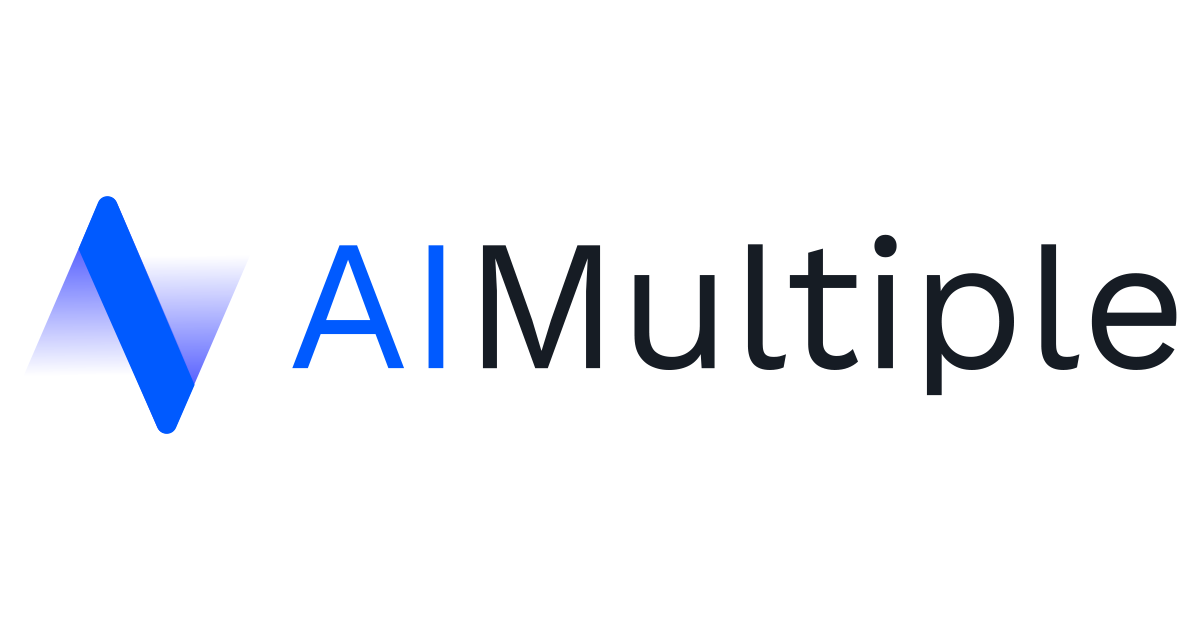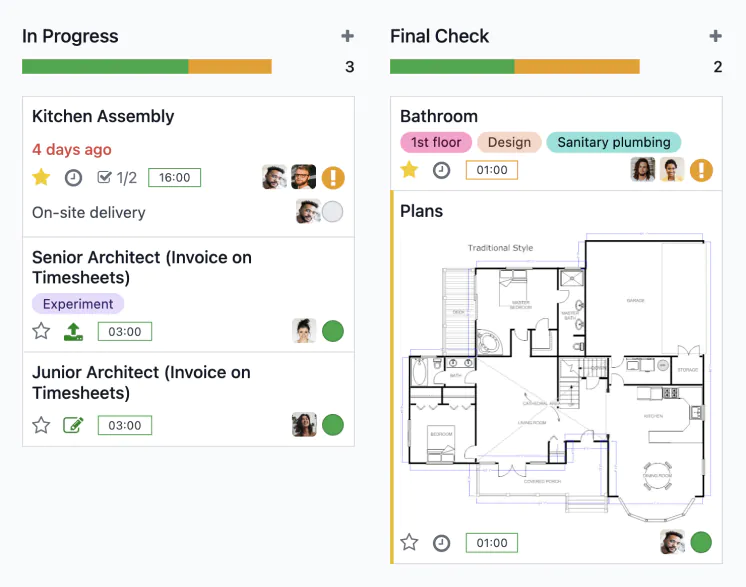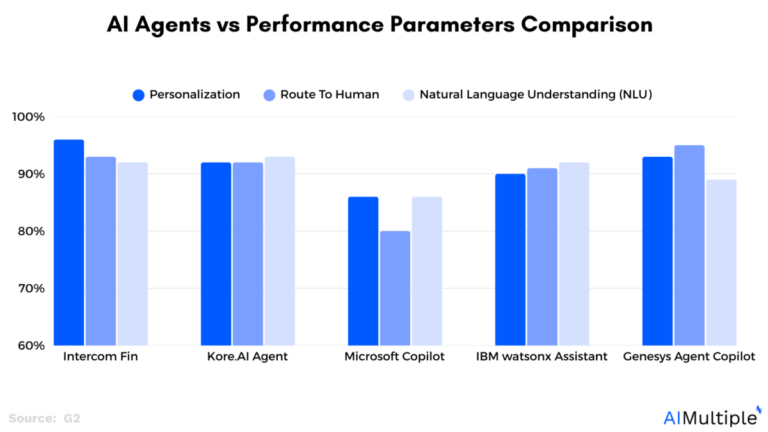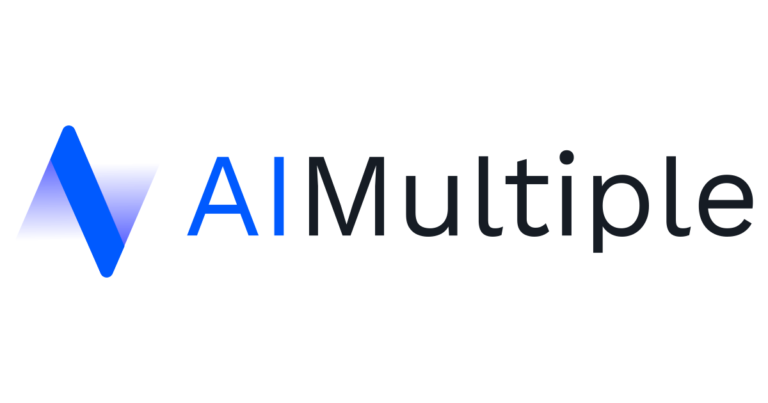Key Concepts & Applications in 2025
Multi-agent systems(MAS) enable distinct AI agents to work together to achieve complex objectives. Every AI agent in the system possesses its specific characteristics and responsibilities that contribute to a greater goal. MAS provides a distinctive approach to managing multi-step tasks and enhancing efficiency.
We examined the most popular multi-agent system platforms and 5 case studies for businesses of all types that want to implement multi-agent systems in their workflows.
Multi-agent systems platforms
Conversational & orchestration platforms
- Google A2A Framework (Google Cloud) is built on Dialogflow and Google Cloud’s service mesh, providing a standardized API that allows agents to discover and invoke each other securely.
- LangChain is an open-source framework that facilitates the creation and management of agents powered by large language models (LLMs). It provides a range of abstractions for chains, agents, tools, and memory modules, enabling the seamless integration of different AI agents, like a question-answering agent working alongside a search agent or a database-query agent, into cohesive workflows.
- Microsoft Bot Framework & Composer facilitates the development of modular bots that can hand off or delegate tasks among themselves (for example, a Q&A bot transitioning to a transaction bot) utilizing the Direct Line protocol and Azure Functions.
- Rasa Enterprise is available for either on-premises or cloud hosting and supports custom “agent skills,” which can be managed through Rasa’s event broker and regulation policies.
Enterprise integration & automation
- IBM Cloud Pak for Integration (Watson Orchestrator) leverages containerized agents, each encapsulating connectors, rules engines, or low‑code flows that can be chained together in an end‑to‑end automation pipeline.
- MuleSoft Anypoint Platform offers “autonomous integration agents” that run API‑led connectivity tasks and can coordinate via a central Anypoint Exchange registry.
Robotics & IoT
- AWS RoboMaker provides simulation and fleet management for multiple ROS‑based robot agents that share maps, tasks, and sensor data via AWS IoT Core.
- Microsoft Azure Digital Twins models physical environments as collections of interacting “twins” (agents) that can invoke each other’s APIs for telemetry, control logic, and event routing.
Decentralized & research‐oriented frameworks
- JADE (Java Agent DEvelopment Framework) is a FIPA‑compliant, open‑source Java stack from Telecom Italia Labs for building and running heterogeneous agent applications.
- SingularityNET is a blockchain-based marketplace where autonomous AI services publish capabilities, negotiate tasks, and settle transactions in AGI tokens.
Key concepts of multi-agent systems
- Multi‑agent reinforcement learning (MARL) enables each agent to learn the best behaviors via trial and error, adapting its policies based on the actions of other agents and changes in the environment. By exchanging observations or gradients, agents collaboratively develop strategies, occasionally displaying emergent phenomena termed “autocurricula,” in which new skills emerge through competition or cooperation among agents.
- Agents operate in a shared environment, using broadcasting or direct messaging to coordinate on common tasks. These communication methods, spanning from blackboard systems to publish-subscribe brokers, enable agents to collaborate without needing a central controller.
- Independent agents, despite having different goals, can still collaborate by negotiating task allocations (e.g., through the Contract Net Protocol). This allows them to dynamically assign roles and resources, addressing challenges that exceed the capabilities of any one agent.
- Interactions among multiple agents act as robust models for complex systems, simulating everything from financial markets to social network dynamics and disaster‑response logistics. They offer valuable insights into the macroscopic behaviors that arise from straightforward agent rules.
What are multi agent systems?
A multi-agent system is a computerized system in which multiple agents interact with each other to achieve common or conflicting goals. Multi-agent systems research focuses on designing and developing systems that can solve complex problems by coordinating the actions of multiple agents.
Developing multi-agent systems necessitates a thorough knowledge of artificial intelligence, distributed systems, and agent systems. Autonomous agents excel at tackling intricate tasks that demand collaboration and coordination between several agents.
Multi-agent systems can effectively model and simulate real-world scenarios, such as supply chain and transportation management. Decentralized agents can collaboratively pursue shared objectives, even in dynamic settings with restricted communication.
While single agents prolong the process by creating excess information and working one by one instead of triggering a “chain reaction. ” Also, an ecosystem of single agents can create unstable outcomes for the next process, whereas multi-agent systems control the outcomes to be suitable for each other.
Well-designed multi-agent systems consist of proactive autonomous agents, meaning problems seldom arise and the execution of the desired process is disrupted minimally, if at all.
System architecture of multi agent systems
Last Updated at 04-22-2025
Hierarchical structure
Hierarchical structure is one of the most popular methods. In this method, supervisor agents assign subtasks to subordinate workers, facilitating scalable task division and management.
In this framework, agents typically become specialists; one might focus on web scraping, while another oversees data analysis, each customized for its specific domain and deployed as microservices or encapsulated modules.
Peer‑to‑Peer (Flat) Structure
In P2P MAS, all agents function equally, with no central authority. They dynamically find peers through methods like gossip or lightweight registries, and negotiate tasks directly, such as using the Contract Net. This decentralized structure excels in dynamic environments like ad‑hoc IoT networks, drone swarms, or peer‑to‑peer energy markets, allowing nodes to join, leave, and share services independently. To reduce coordination overhead, designers frequently incorporate local caching, adaptive polling, or lightweight aggregation layers.
LLM‑Mediated Hub
Large language models (LLMs) have allowed agents to utilize transformer‑based reasoning elements to enhance decision‑making processes and facilitate natural language interactions, serving as “universal translators” that connect diverse agents and human participants in hybrid environments and ecosystems.
Core components & architecture patterns
- Agent kernels integrate planning, reasoning, and execution components, frequently utilizing a belief‑desire‑intention (BDI) engine or policy network to govern agent actions.
- Message buses and brokers (such as pub/sub systems, message queues, or service meshes) offer reliable, decoupled channels for event propagation and request management.
- Registry and discovery services facilitate dynamic agent identification and authentication through standards like DNS‑SD, mDNS, or proprietary registries, ensuring agents can securely find and interact with peers in real time.
Communication & coordination mechanisms
Multi‑agent systems utilize various interaction models: request-response for synchronous queries, publish–subscribe for event streams, and blackboard systems for collaborative shared state, each customized to distinct latency and coupling needs.
Classic coordination patterns consist of the Contract Net Protocol (where managers solicit proposals, contractors bid, and contracts are granted), auction mechanisms for allocating resources, and leader election algorithms for dynamically assigning control roles among peers.
Agents share structured data using schemas and serialization formats, such as JSON‑LD for linked data interoperability, Protocol Buffers for efficient binary messaging, and RDF for semantic web integration.
Agent2Agent (A2A) protocol
Google’s Agent2Agent (A2A) protocol establishes an open‑source, community-led standard for discovering, authenticating, and invoking agents across diverse platforms. It outlines a REST/gRPC‑based API schema, security features (such as mutual TLS and token exchange), and a registration service that enables agents to dynamically find and securely access each other’s capabilities without relying on hard‑coded endpoints.
For more detailed information, see our Agent2Agent article.
Case studies of multi-agent systems
Invoice processing of Matrix
A pipeline of agents, an OCR/ data‑extraction agent, a business‑rule validation agent, an approval‑routing agent, and a payment‑execution agent, operates collaboratively under a central orchestrator. Each agent makes decisions, like flagging anomalies or selecting approval paths, and publishes events on a message bus; downstream agents subscribe and react, creating a loosely coupled workflow.
Matrix, a multi‑agent LLM framework that progressively develops domain expertise through memory modules, has demonstrated significant improvements in handling complex invoice fields in collaboration with a global logistics company.
Smart buildings of OpenBlue
In Johnson Controls OpenBlue, individual agents handle HVAC, lighting, occupancy sensing, and security. A central “supervisor” agent oversees key performance indicators (KPIs) such as energy consumption and comfort, dynamically adjusting set‑points for each subsystem agent.
Instead of being a single entity, every building function operates as a separate service‑agent, trading resources through a publish–subscribe system to achieve safety and efficiency objectives.
Warehouse robot swarm of Amazon
Amazon’s Kiva “Drive Units” operate as a decentralized fleet: navigation agents exchange map fragments, collision‑avoidance agents communicate local intents, and task‑assignment agents auction shelf‑retrieval jobs.
There isn’t a singular controller; instead, robots interact in real time to prevent traffic jams and enhance throughput, demonstrating emergent flow patterns that boost efficiency.
Economic policy simulation of CANVAS
The Bank of Canada’s CANVAS framework models households, firms, banks, and a central bank agent. Firms and consumers independently decide on spending and investments; banks determine lending rates; the central bank agent adjusts its policy rule.
Each sector‑agent adheres to its unique behavioral rules, exchanging price and quantity messages at every “tick,” allowing macro outcomes to arise from micro interactions.
Misinformation containment on X
In an X simulation, agents termed “debunkers” identify likely false posts, while “amplifiers” disseminate corrections, and “monitors” measure the rate of spread. A coordination agent assigns debunker resources to the most viral threads.
Each type of agent operates under its specific behavioral rules, exchanging messages about price and quantity at each “tick,” allowing macro outcomes to arise from micro interactions.
Benefits, challenges & limitations of multi‑agent systems
Benefits
- Scalability: Horizontally adding specialized agents allows for meeting increasing demands without creating central bottlenecks.
- Resilience: Isolating faults and enabling dynamic fail‑over guarantees that failures of individual agents won’t bring down the entire system.
- Modularity: Loosely coupled and language‑agnostic components support incremental upgrades and diverse deployments.
Challenges & limitations
- Complexity: Emergent behaviors and non-deterministic systems make debugging and validation more challenging.
- Standards fragmentation: Competing protocols such as FIPA ACL, KQML, and A2A may impede adoption and interoperability.
- Security & privacy: Robust authentication and encryption measures are required to build trust among autonomous agents, counter threats from malicious actors, and protect sensitive data.
Best Practices for Designing MAS
Establish precise agent contracts through standardized communication languages (like FIPA ACL) and thoroughly documented API schemas or SLAs, ensuring clarity regarding each agent’s inputs, outputs, and potential failure modes.
Utilize a service mesh (such as Istio or Linkerd) to oversee inter‑agent communications, providing observability, traffic control, and load balancing while keeping agent code complexity minimal.
Introduce health checks and circuit breakers at the infrastructure layer to swiftly identify unresponsive agents and prevent cascading failures. This will allow the system to gracefully degrade under heavy load.
FAQ
What’s the difference between single‑agent systems and multi‑agent systems, and why use multiple agents?
Single‑agent systems rely on one centralized “brain” to tackle tasks, which can become a bottleneck for complex problems. In contrast, multi‑agent systems distribute work across specialized agents that communicate and coordinate, whether through publish–subscribe buses or direct messages, to solve complex tasks more efficiently. By leveraging decentralized control, MAS enables better scalability (you can add more agents), resilience (one agent’s failure doesn’t collapse the whole system), and flexibility in dynamic environments.
What are the key components that make multi‑agent systems work?
At their core, multi‑agent systems combine:
Agent kernels (planning, reasoning, execution modules) that let each software agent think and act autonomously.
Communication channels (message buses, registries) so agents discover other agents and exchange data using standardized state schemas (e.g. JSON‑LD, protocol buffers).
Coordination mechanisms (Contract Net, auctions, leader election) to allocate tasks among distributed agents, balancing coordination complexity and available computational resources.
These components turn isolated software agents into collectively intelligent, distributed problem‑solving networks.
Where are multi‑agent systems used in the real world?
Multi‑agent technologies power a wide range of AI applications and distributed systems, for example:
1. Supply chain management: separate agents track inventory, predict demand, and optimize shipping routes in real time.
2. Smart transportation systems: traffic‑light agents coordinate to reduce congestion and reroute vehicles during incidents.
3. Robotics swarms: fleets of drones or warehouse robot agents negotiate tasks and avoid collisions without a central controller.
4. Financial markets & economic simulations: autonomous trader agents model and forecast market dynamics.
Across various domains, MAS open up new possibilities for tackling complex problems that outstrip the capabilities of a single agent or single-threaded approach.
Further readings
- Agentic Document Extraction







